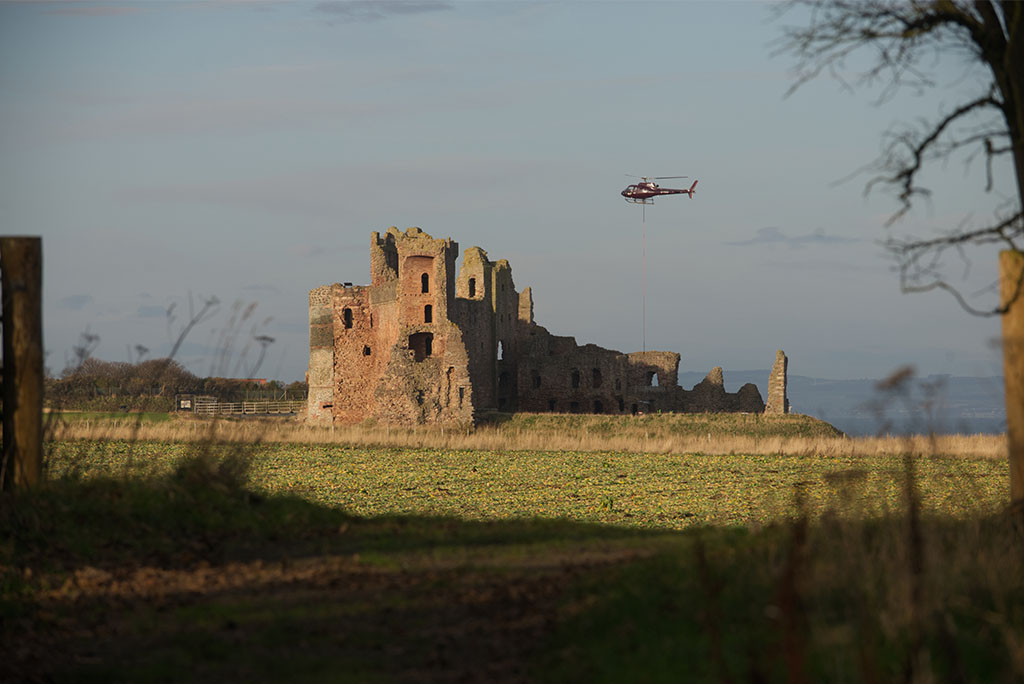A helicopter delivering tons of scaffolding to a medieval castle! These images really show the scale and complexity of our ongoing programme to check the high-level masonry at a number of our sites.
Visitors to Tantallon castle may remember crossing the narrow wooden bridge to get into the castle. Great if you’re playing “Three Billy Goats Gruff”. More tricky if you’re trying to get scaffolding into a castle. How do you resolve that? With the help of a helicopter, of course!
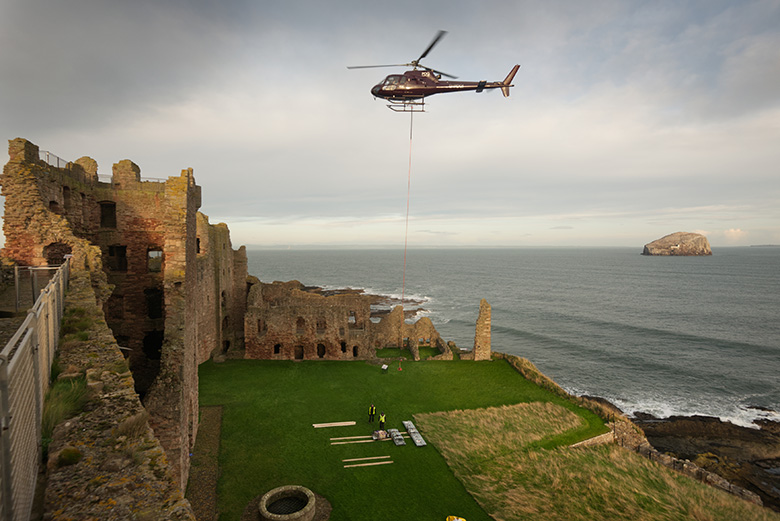
Airlifting scaffold materials into Tantallon Castle in December 2022 in preparation for inspections, which started at the end of January 2023.
Looking back
With spring just around the corner, it feels like a good time to take a look ahead at what 2023 is likely to bring for our high-level masonry project. It is also a good opportunity to look back at some of the challenges and successes.
It’s been a year since we announced the closure of 50 of our sites, in addition to 20 that we closed in summer 2021. Initial inspections at a sample group of sites had revealed some concerning issues with high level masonry. We acted quickly to secure other sites that may have been affected by the same kinds of problems. You can read more about that in my earlier blog.
We understand that this was a decision which brought concern, frustration and disappointment to many. From our own staff whose jobs changed while sites were closed, to the communities who live around our sites and depend upon them as an important part of the local economy, and our visitors and members who have missed exploring these wonderful old places. It was not a decision that was taken lightly. The safety of staff and visitors has always been our top priority and we had to act when we identified a risk. Leaving sites open until we could inspect them wasn’t an option, legally or, from a personal perspective, morally.
Inspecting the sites
Thanks to the hard work, experience and dedication of our high-level masonry project team and colleagues from across the organisation, we’ve been able to restore full and partial access at around 30 sites which were impacted by this programme of inspections. Dundonald Castle, Burleigh Castle, St Andrews Castle, and Inchcolm Abbey are among those that reopened last year.
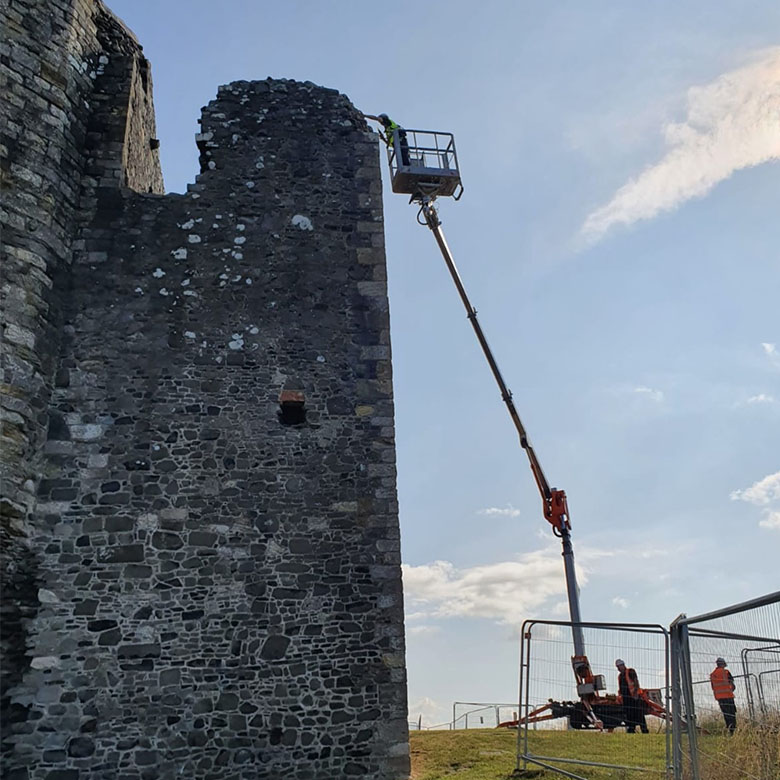
Dundonald Castle being inspected.
Surveying these sites is no easy task – especially as our meticulous approach involves checking all of the stonework by hand. On average, it takes around a month for a team of inspectors to check each site. This ranges between four person days for smaller sites, to 136 person days for larger, more complex sites. At Dumbarton Castle we inspected over a kilometre of masonry walls, constructed of thousands of individual stones.
We now have 20 conservation colleagues working directly on delivering inspections on this project. They are supported by numerous colleagues across the organisation working on other elements of the project.
It’s a good sized inspection team. However, with around 40 sites still left to be checked they can’t be everywhere at once. We do have a prioritised list of sites to inspect from the Orkney Isles down to Dumfries and Galloway and everywhere in between.
Prioritisation
The sequence of checking our sites might appear a bit strange at a first glance. Some smaller, less well-known sites have been prioritised ahead of more popular places. That’s because we first had to attend to sites where it was impossible to fully restrict access. For example, perhaps because a road ran alongside the monument or where we border other properties. We didn’t want to put any members of the public or our neighbours at any risk.
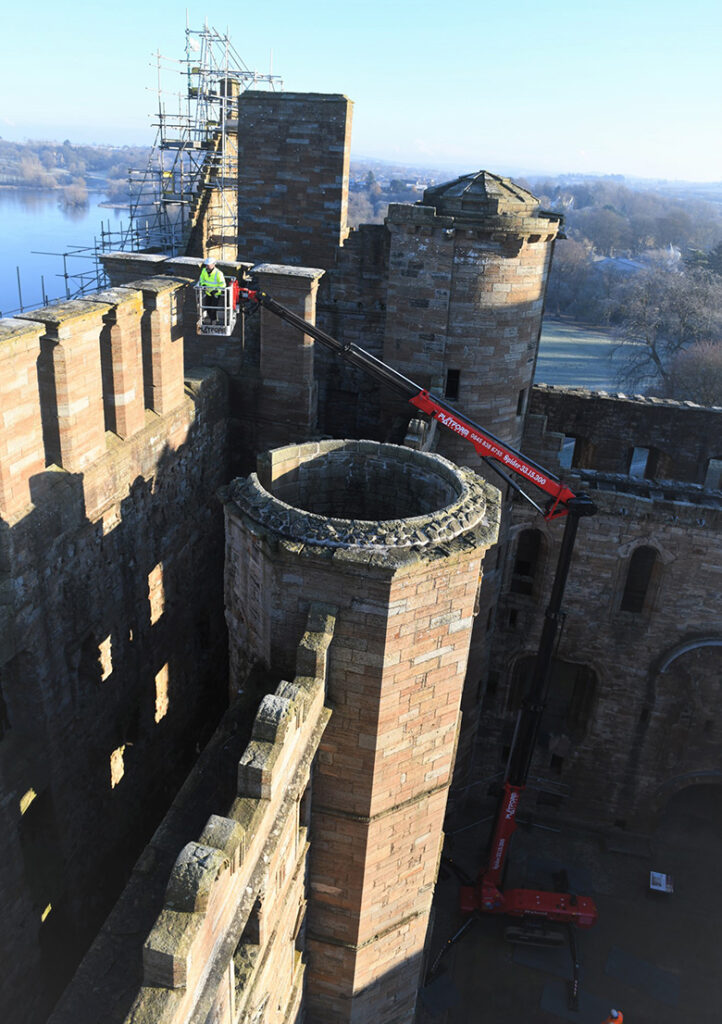
Linlithgow Palace being inspected in winter 2022. The results of the survey are currently being evaluated and will inform our next steps.
We do appreciate that it might have appeared that sites had been restricted and that no work was taking place, but I’d like to reassure people that was not the case. Work has been ongoing. This has included pre-inspection work, such as checking the suitability of the land around the site to withstand the weight of heavy machinery like specialist access platforms or checking rope access points. Our teams have been out and about, but perhaps just not at a site close to you at the time you were visiting.
This February, we’re active at Caerlaverock, Dirleton, and Tantallon Castles if you are in the area.
Health and safety
I appreciate that my words may not be well received, however, I would like to stress that the works being carried out are completely necessary. This is not a case of ‘’health and safety gone mad’’.
Our physical tactile inspections have been uncovering problems that would not have come to light using traditional methods of visual inspections. I’m absolutely certain that restricting access until we can check all of these sites has been the right thing to do; it is our legal duty.
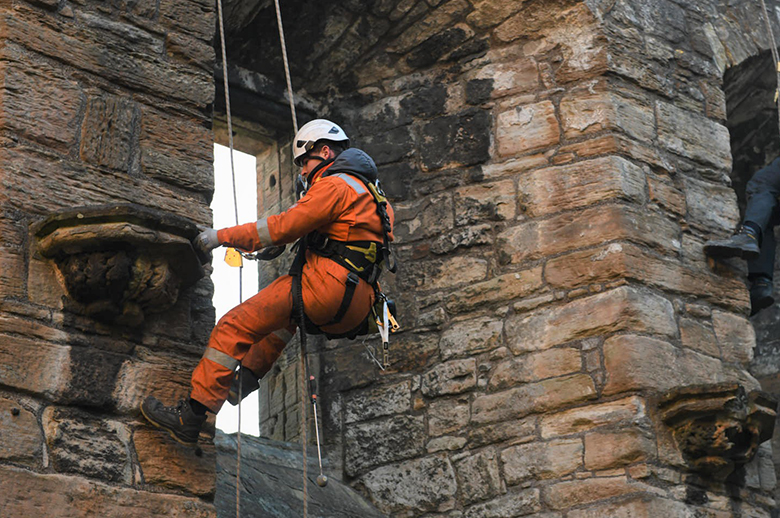
Rope access specialists check the stonework by hand at Linlithgow Palace.
Thankfully we’ve been able to fix many of these defects as we’ve been going. This includes repairs to slates and lightning conductors, de-vegetation to remove invasive weeds, re-bedding of high-level stones and removal of dangerous material. Where more involved work is needed, we’ve put in place interim solutions which restore as much access as possible to our properties. We’ll return to carry out further repairs once we’ve got solutions in place.
Our teams have been working through the winter, when they can. Although sometimes you have to know when to draw the line. At times the screens of the iPads that we use for recording survey results stopped working because it was too cold. There were other times when it was so cold that potential loose material was frozen onto the monument.

Recording the results of inspections of memorials and gravestones at Dryburgh Abbey on an iPad. Following inspections, the abbey nave, including Sir Walter Scott’s Tomb, grounds, shop and toilets are open again.
Site staff
I’m very lucky to have colleagues all over Scotland who really love their work at our sites. They care deeply about these places, their history, the local communities and our visitors.
At sites like Tantallon Castle, Arbroath Abbey and Caerlaverock Castle we’ve kept our stewarding staff on site. They welcome visitors to the grounds, exhibitions and gift shops, even though there are still access restrictions in place at the buildings. In other areas, we’ve been able to redeploy staff to other sites or give them the opportunity to work on other projects.
We’re aware that having staff at our sites to welcome visitors makes all the difference and it’s important to us that we keep this talent, experience and passion with our organisation.
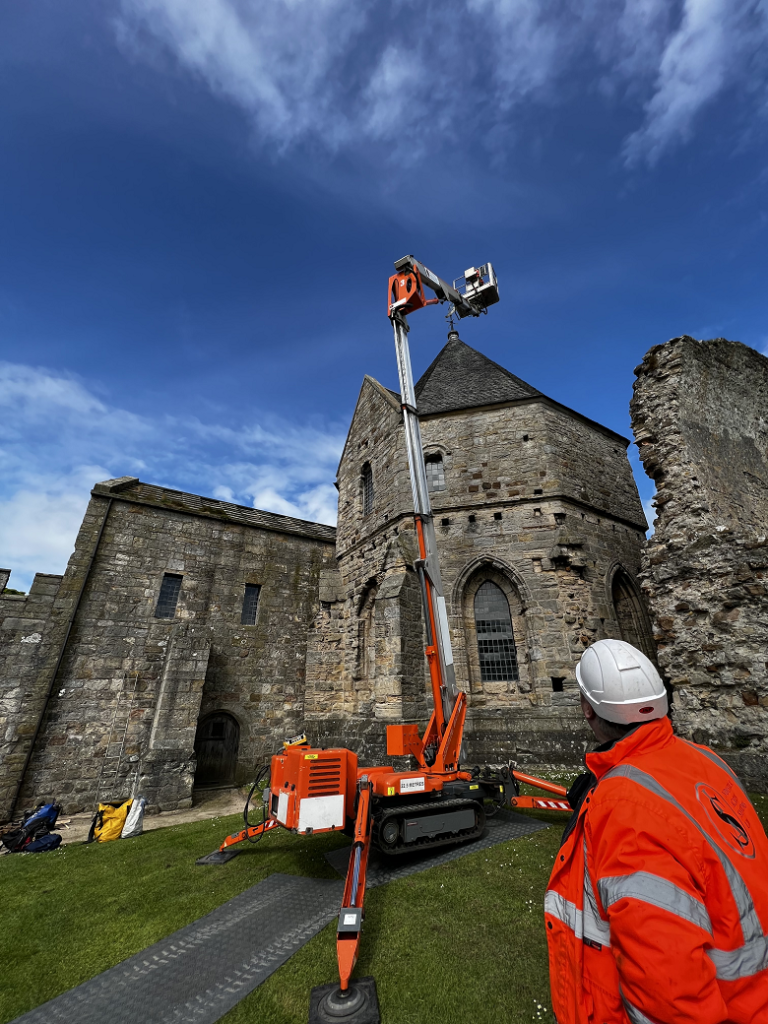
Inchcolm Abbey reopened in June 2022 after it was inspected. Although it’s currently closed for winter, it will be open again in April for our summer season.
Looking ahead
So far, we’ve been able to restore access at around 30 of the 70 sites involved in this programme.
With inspections currently on schedule, we’ll be able to open more of your favourite sites this year. Holyrood Abbey reopened on 6 February and Dumbarton Castle will reopen in the coming weeks. Later this spring, we will be able to restore access at the majority of Aberdour Castle and Lochleven Castle.
We’re also looking forward to reopening more of our seasonal sites in 2023. Keep an eye on our website and social media for announcements.
We’ve also been listening to your feedback and getting out and about meeting community representatives at our sites. We’ll bring you more updates as the inspections progress and more properties open up.

